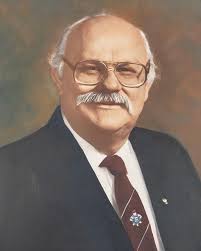 The column title is Latin. It means Order out of Chaos.
The column title is Latin. It means Order out of Chaos.
The word Chaos is a term we give to any order of things that produces confusion in our minds. We can feel it at many levels; personal, organizational or even professionally. Usually it is used as an epithet: This place is in Chaos! Hardly anyone ever celebrates the antithesis of that situation; Out of chaos, comes order.
Perhaps we should define these two terms more clearly to determine what we are looking for. For example, chaos is a noun. It describes a state of utter confusion or disorder, a total lack of or organization or order; any confused, disorderly mass of things to be sorted out.
So, what is order? It too is a noun. Generally, it means an authoritative direction or instruction; command; mandate. Commonly the term order is used by the military context of “order” being a command to be followed. But it can also mean the actual disposition of things in some context. In general, this means that one thing follows another; succession or sequence implies order, etc.
Now for the second big question. Who creates chaos out of order? And, who brings order out of chaos? I have a fairly straightforward answer; we do. Those of us who are involved in a set of circumstances that can be organized or kept in disarray are the creators of both chaos and order. In a sense, it is what leadership is all about.
Is it not true that sometimes the change of one person in an organizational structure can bring about order. Is it also true that changing one person in an organization can turn order into chaos fairly quickly? I have seen both occur in my career, sometimes within the same organization.
Which role would you rather play? Perhaps it might be a little easier to choose the right direction by adding two more words to the discussion; clarity and priority. No one has ever uttered the phase- out of clarity comes priority, that I know of. And, no one has ever said that out of priority comes clarity either. But, I believe them to both be true.
What allows chaos to prevail is a lack of clarity. And the use of priorities is what brings order to things. Focusing upon each of these words reinforces the behaviors that allow a person to gain control over chaos. Clarity is the quality of being easily understood. It also implies the quality of being expressed, remembered, and understood in a very exact way.
My best definition of priority is something that is given special attention- it is something that is arranged in terms of being earlier in time or higher in precedence than something else. So – you want to be a leader? Clarify what is going on and set priorities in dealing with them…
Sound simple. But, of course it isn’t.
I was reminded of this level of difficulty a few nights ago when I was reading the “Life and Legend of Robert E. Lee”, by Michael Korda ( Harper, 2014). While Lee was the one that surrendered his sword at Appomattox to a victorious Grant, he is still generally regarded as the best military leader that this country has ever produced. This book explains why; he brought order out of chaos.
I often read the biographies of military leaders to exam their use of leadership concepts that we are trying to apply in a civilian world. This particular work provides and excellent example of how we can learn some lessons from human behavior in the field of leadership.
On page 253 of Korda’s book there is a paragraph that summarizes the concept clearly, “As control of the of the armed forces assembling in Virginia gradually passed from the state (of Virginia) to the Confederate Department of War, a period of confusion reigned, until Lee’s steady hand could sort things out.”
To wrap this column up, I would submit that leaders are people that understand this concept without a lot of pomp and circumstance. They know that clarity is needed in an organizational context. They know that setting priorities is not an abstract thing to do. They have the ability to communicate these ideas in a succinct fashion. They realize that these actions also reduce rumors, improve resource utilization and create a positive sense of purpose in the organization. Some might call that morale- I call it followership. While this is not an article about strategic planning, this is where strategic plans get their backbone and muscle.
The opposite is also true – bad leaders fail to do any of that. They create ambiguity in the vision. They create conflict in the priorities. And, lastly they fail to apply their personal skills to the organizational interests instead to their own interests.
What is important now is for you to take inventory of how you fulfill the leadership role in your life, your organization and your profession. Do you contribute to the order of things, or do you create confusion? Do you complete your priorities by setting goals and objectives or are all things in life equal?
The only person that truly answers these questions is you. However, there are many others than can form an opinion of your leadership style by observing your use of these concepts in your day to day application of leadership within you organization. What would you like your reputation to be?
© 2014 Ronny J. Coleman. All rights reserved.
Chief Ronny J. Coleman Bio
Affiliations and alliances
Also visit The Briefing Room with Michael S. Williams and The Drawing Board with Dave Hubert.



